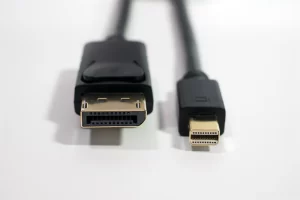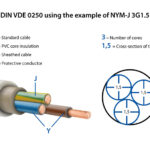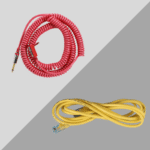A DisplayPort cable is a type of digital audio and video connection used to connect computers, monitors, projectors, and other multimedia devices. Developed by the VESA (Video Electronics Standards Association), the DisplayPort standard offers an efficient and high-quality way to transmit video, audio, and data between devices. DisplayPort cables are commonly used in both consumer electronics and professional environments, particularly in gaming, graphic design, and multimedia applications.

What is a DisplayPort Cable
What Does a DisplayPort Cable Do?
A DisplayPort cable serves as a digital interface for transmitting both video and audio signals. It supports a variety of resolutions and refresh rates, including 4K and even 8K, making it suitable for high-definition displays and monitors. DisplayPort cables also support multi-stream transport (MST), enabling multiple monitors to be connected through a single cable in daisy chain setups.
Types of DisplayPort Cables
There are two main types of DisplayPort cables: DisplayPort 1.1 and DisplayPort 1.2, with the latter offering enhanced capabilities.
DisplayPort 1.1:
The original version of DisplayPort, capable of supporting resolutions up to 2560x1600 at 60Hz.DisplayPort 1.2:
Offers enhanced features, supporting higher resolutions (up to 3840x2160 (4K) at 60Hz) and better color depth. This version also allows for higher refresh rates and multi-monitor setups through daisy-chaining.DisplayPort 1.4:
The latest version, supporting 8K resolution at 60Hz or 4K at 120Hz. It also supports HDR (High Dynamic Range) and better compression algorithms for smoother transmission.Mini DisplayPort:
A smaller version of the standard DisplayPort connector, commonly used in laptops, especially Apple devices. The functionality is the same as regular DisplayPort but with a more compact size.
Key Features of a DisplayPort Cable
High-Quality Digital Signal:
DisplayPort cables transmit both audio and video signals in a digital format, ensuring clearer, sharper images and superior sound quality compared to analog cables like VGA.Multiple Monitor Support:
DisplayPort 1.2 and later versions support multi-display setups using a daisy chain configuration, allowing multiple monitors to be connected through a single port. This is particularly useful for workstations or gaming setups.Resolution and Refresh Rate:
DisplayPort can handle 4K resolutions, 144Hz refresh rates, and high color depths, making it ideal for gaming, video editing, and graphic design applications that demand high performance.Audio Support:
In addition to transmitting video, DisplayPort cables also carry audio signals, allowing devices like monitors with built-in speakers to output sound, or sending audio to external sound systems.Backward Compatibility:
DisplayPort is compatible with VGA, DVI, and HDMI through the use of adapters, providing flexibility in connecting various display devices.
When Should You Use a DisplayPort Cable?
Here are some of the most common applications of DisplayPort cables:
Gaming:
DisplayPort is a top choice for gamers due to its ability to support high resolutions, refresh rates, and color depths, enabling a smooth and immersive experience in high-performance games.Professional Workstations:
For users working with graphic design, video editing, or 3D rendering, DisplayPort ensures that high-resolution monitors are connected with minimal signal loss and supports multi-monitor setups for enhanced productivity.Home Theater Systems:
DisplayPort can connect Blu-ray players, gaming consoles, and computers to 4K TVs and projectors, offering superior video and audio transmission.Corporate and Office Environments:
In offices or conference rooms, DisplayPort allows easy connection of laptops and computers to external monitors, projectors, and presentation systems, enabling professional-grade presentations.
Benefits of DisplayPort Cables
High-Resolution Support:
DisplayPort can easily handle high resolutions up to 8K, making it ideal for large, high-quality displays such as 4K monitors or multimedia setups.Future-Proof:
The latest versions of DisplayPort (such as DisplayPort 1.4) support 8K video and HDR, ensuring that your cable and equipment will be compatible with future technology advancements.Compact and Versatile:
With options like the Mini DisplayPort, the cable can be used in smaller devices such as laptops and tablets, providing flexibility in both home and office environments.Reliable Performance:
DisplayPort provides stable, high-quality transmission, making it the go-to choice for pro-grade displays and business-critical applications where signal quality is essential.
Conclusion
A DisplayPort cable is an essential tool for anyone looking to connect high-definition video and audio devices with advanced performance in mind. Whether you're setting up a gaming rig, professional workstation, or home theater system, DisplayPort offers fast, reliable, and high-quality performance. With its support for 4K and 8K resolutions, high refresh rates, and multi-display configurations, it's a versatile and future-proof solution that meets the needs of modern display technology.





